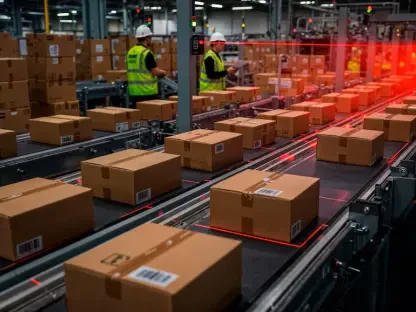In the ever-evolving field of logistics, Rohit Laila has been a significant influencer, driving innovation through digital transformation. His extensive experience in supply chain and delivery, combined with his passion for technology, makes him a leading voice in addressing the challenges and opportunities in this sector, particularly in the Philippines, a country grappling with unique logistical hurdles.
How does the logistics and transportation industry function as the backbone of economic activity?
Logistics is fundamental to economic vibrancy as it ensures efficient movement of goods, which supports businesses and consumers alike. Without a well-functioning logistics system, supply chains would suffer disruptions, affecting everything from product availability to pricing. It’s the linchpin that keeps trade moving smoothly, enabling economic growth and development.
What specific challenges does the logistics sector face in the Philippines?
The Philippine logistics industry faces a unique set of obstacles, including its complex geography of over 7,000 islands, which complicates transportation and delivery. Additionally, the sector struggles with traffic congestion and limited infrastructure, both of which contribute to inefficiencies and increased costs. These factors collectively pose significant challenges in maintaining an effective and timely supply chain.
Can you explain what digital transformation means in the context of logistics?
In logistics, digital transformation involves adopting technology to enhance business operations, service delivery, and value creation. It means moving from traditional, often fragmented systems to integrated, data-driven platforms. This shift enables real-time decision-making and operational agility, improving efficiency and transparency across the supply chain.
Why is digital transformation seen as a necessity for the logistics industry in the Philippines?
For the Philippines, with its geographical challenges and growing e-commerce demands, digital transformation isn’t just beneficial; it’s essential. By embracing digital tools, logistics providers can overcome fragmentation, streamline operations, and meet modern customer expectations for fast and dependable service. It’s a strategic move to remain competitive in a global market.
How can digital transformation help solve the fragmentation problem in Philippine logistics?
Digital transformation can connect fragmented logistics operations, allowing all players—be it freight forwarders, transporters, or customs brokers—to interact on a unified platform. This connectivity enhances visibility and coordination, reducing operational delays and costs that often arise from relying on manual processes and isolated tools.
How can digital transformation improve customer experience within the logistics sector?
It significantly boosts customer experience by providing real-time shipment tracking and automated notifications, which enhance transparency and reliability. Customers appreciate timely updates and quick issue resolutions, which digital tools make possible, thus elevating overall customer satisfaction.
What challenges does the geography of the Philippines present to logistics operations?
The archipelagic nature of the Philippines presents logistical challenges in terms of last-mile and inter-island delivery. The complexity of navigating through numerous islands can lead to inefficiencies in route planning and coordination, which digital transformation seeks to address through optimization and enhanced connectivity.
How can digital tools enhance regional and island connectivity in the Philippines?
By utilizing digital tools like real-time mapping and route optimization, transportation across islands can be more efficient. These technologies help logistics providers plan better, coordinate effectively, and execute multi-modal transportation seamlessly, significantly improving island connectivity.
In what ways can digital transformation boost efficiency and cost savings for logistics companies?
Digital transformation reduces inefficiencies often found in manual logistics operations, such as data entry errors and document mismanagement. By leveraging cloud-based ERP systems and automated billing, companies can minimize errors and delays, thus saving time and resources while reducing operational overheads.
What key technologies are driving digital logistics in the Philippines?
Several key technologies drive digital logistics, including cloud-based logistics ERPs, which centralize operations for easier access and management. IoT and real-time fleet tracking improve asset visibility and monitoring, while digital documentation reduces paperwork and speeds up processes like customs clearance.
What challenges does the Philippine logistics sector face when adopting digital transformation?
The sector faces several hurdles, including a low level of digital maturity, with many companies still reliant on manual processes. Cost concerns particularly affect smaller businesses hesitant to invest in new systems. There’s also a skills gap, as digital systems require trained personnel for effective implementation.
How can logistics companies overcome low digital maturity?
Overcoming low digital maturity involves investing in skill development and adopting a gradual approach to digital adoption. Companies should begin with manageable changes, such as digitizing one process at a time, and leverage scalable platforms that can grow with their operations.
What can be done to address cost concerns for smaller logistics companies considering digital transformation?
To tackle cost concerns, smaller companies can explore scalable solutions that offer flexibility and cost-efficiency. Collaborations within the logistics ecosystem can lead to shared resources and support, easing the financial burden of digital upgrades.
How can the skills gap in digital systems be addressed within the logistics sector?
Addressing the skills gap requires companies to invest in training programs and upskill their workforce. Encouraging continuous learning and integrating digital literacy into organizational culture can help bridge the gap and ensure smooth transitions to digital systems.
How can resistance to change be managed among organizations transitioning to digital operations?
Managing resistance involves clear communication about the benefits and necessity of digital transformation. Involving employees in the transformation journey and providing adequate training and support can mitigate fears and foster a more receptive attitude toward change.
What steps can logistics companies take to begin their journey toward digital transformation?
Companies should start small, by digitizing select processes or departments, then expand gradually. It’s crucial to choose smart, scalable solutions that integrate well with existing systems. Investing in human capital and collaborating with industry stakeholders are also key steps in this journey.
Why is investing in people important for successful digital transformation in logistics?
Investing in people is crucial as trained employees are essential for implementing and operating digital systems effectively. Providing training ensures that employees have the necessary skills to contribute to the transformation process and leverage new technologies to their full potential.
How can collaboration across the logistics ecosystem support digital transformation efforts?
Collaboration involves sharing knowledge and resources across technology providers, government, and industry players. Such partnerships can lead to better solutions, increased accessibility of digital tools, and a more cohesive effort toward sector-wide transformation.
Why is digital transformation considered a mindset shift rather than a one-time upgrade?
Digital transformation is about embracing ongoing change and innovation, beyond just implementing new technologies. It’s a cultural shift towards continuous improvement and adaptation, vital for staying relevant in a rapidly evolving market landscape.
What future trends will likely impact logistics companies that fail to embrace digital transformation?
Companies that resist digital transformation risk falling behind due to rising expectations for speed and transparency. Future trends such as automation, AI, and enhanced customer expectations will demand digital capabilities. Investing in these now prepares companies for foreseeable challenges, ensuring their competitive edge and success.








